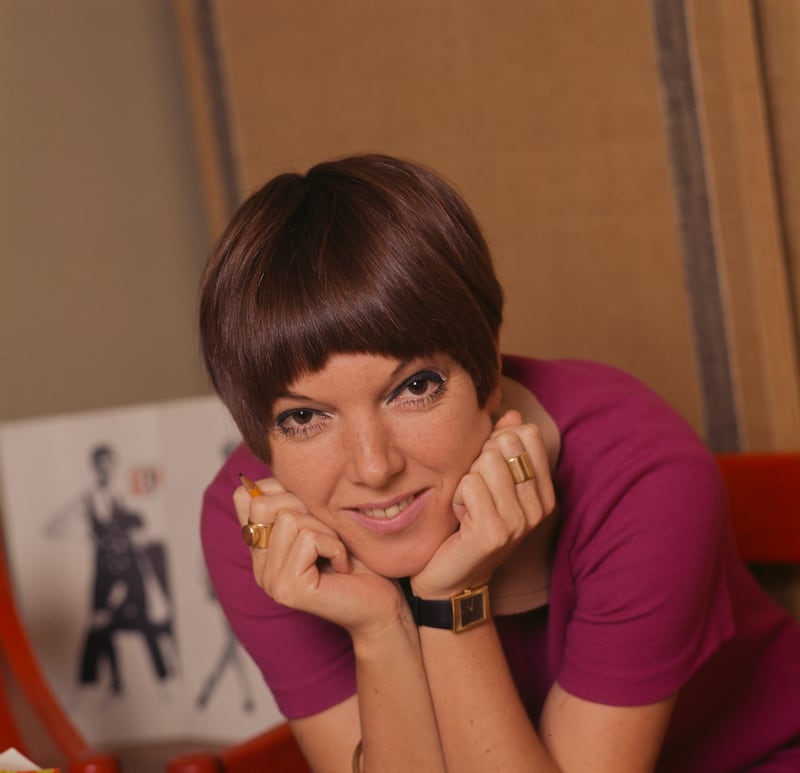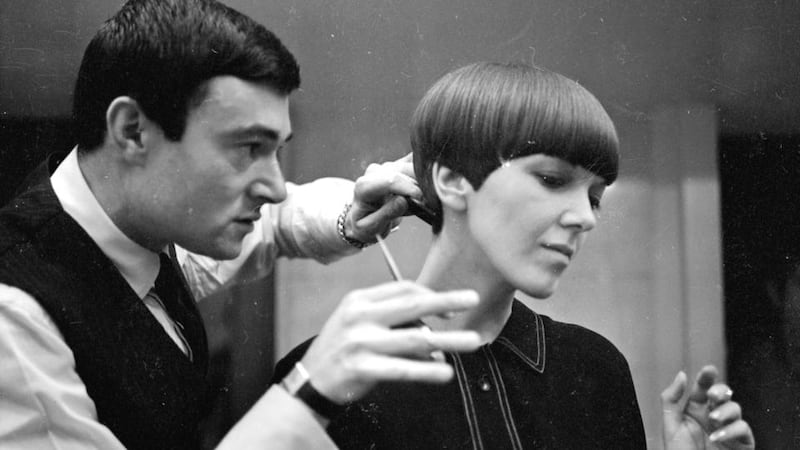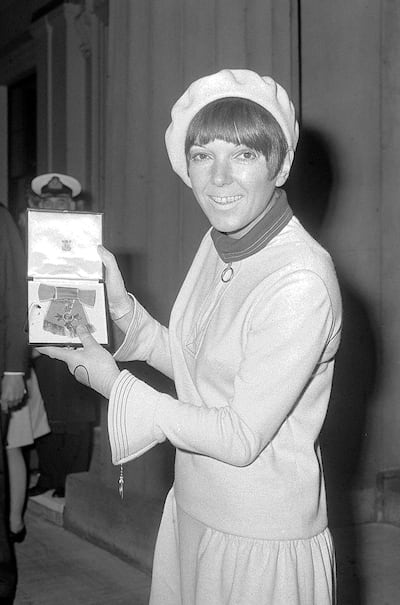Born: February 11, 1930
Died: April 13, 2023
The fashion designer Mary Quant had perfected key aspects of 1960s British pop culture long before midnight chimed on the last day of 1959. The Chelsea girl and her try-anything attitude, her short, narrow garments casually bought from a Kings Road boutique – Quant had been working on these since the mid-1950s. It took the zeitgeist until at least 1963 to catch on, let alone catch up.
Quant, who died aged 93, opened her first King’s Road shop, Bazaar, in 1955, the year after Gabrielle “Coco” Chanel ended her postwar hiatus and reopened her Paris salon. They shared a similar ambition: to clothe young, independent women.
READ MORE
Life then had been rationed, begrudged; almost the only place where the young could create their own excitement was at art college, with the Chelsea Arts Ball an annual chance for frivolity. At that ball a teenaged Quant, clad chiefly in balloons, hooked up with a fellow Goldsmiths’ College student, Alexander Plunket Greene, who swanned around long-haired in his mother’s silk pyjama top, trumpet in one hand and film script in the other.
“Life... began for me when I first saw Plunket,” she wrote in her 1966 autobiography, Quant By Quant. “Alexander had no use for straightforward sex at all,” she added, and he also was consistently unfaithful.
By the late 1950s Quant had synthesised her Chelsea girl look from elements of Left Bank kooky beatnik and practical details of American sportswear, plus her preference for vulgarity over good taste
He came from a family said to be Evelyn Waugh’s model for the Flytes in Brideshead Revisited and was at art college crossing social classes. Born in Blackheath, southeast London, she had been persuaded by her parents, Jack and Mildred, both schoolteachers, to study art rather than fashion on leaving school. She first worked as a trainee assistant at the Mayfair milliner Erik, picking up pins with a magnet and counting out the ration of one chocolate biscuit a day for the assistants, who were so poorly paid that, as Cecil Beaton quipped, “there were weeks when only an aspirin touched Mary’s lips”.

The creation of a hat was Quant’s practical introduction to fashion, and the sculptural moulding that quickly shapes millinery influenced her approach to clothes. She had reservations about “spending three days making one hat which would be worn for one afternoon by a grumpy, spoiled middle-class woman”. She took up dress-patte

rn-cutting to put outfits together for herself.
Plunket’s poverty ended on his 21st birthday when he inherited £5,000. He wanted to open a nightclub but could not get an alcohol licence, so opened a restaurant, and Quant set up Bazaar on the ground floor. The boutique acted in lieu of the desired club, with wine or scotch under the counter and girls shedding their garments on the floor. They were part of the new bohemian Chelsea set and their stories became SW3 legend.
[ Paco Rabanne obituary: A radical fashion designer before turning to perfumeOpens in new window ]
By the late 1950s Quant had synthesised her Chelsea girl look from elements of Left Bank kooky beatnik and practical details of American sportswear, plus her preference for vulgarity over good taste. Then she began supplementing it with memories of her ideal – a girl of about eight glimpsed during a childhood dancing class, who had a Dutch doll haircut and wore a dark, skinny, knit, very short, pleated skirt, white socks and black patent shoes. Quant made similar clothes the basis of the dollybird look of the 1960s. In retrospect, this sexualised projection of a very young girl feels disturbing.
Geometric variants
Quant’s own hairdresser, Vidal Sassoon, cut geometric variants of the bob. The whole ensemble pointed in one direction. “The crotch is the most natural erogenous zone,” said Quant, directing her models in their Banlon, Bri-nylon and PVC minishifts to prance for maximum pelvic thrust. Angry bowler-hatted men beat with fists on Bazaar’s window, Quant recalled: “It got to them in some way, what I was doing.”

Quant went wholesale in 1961, and two years later launched mass-market fashions under the name Ginger Group. She also signed on as an adviser with the US retailer JC Penney: from then on she could afford to hop on big jet planes to distant destinations on a whim.

But she was never comfortable with large-scale clothes production and soon realised that the real money lay in franchising household goods such as bedding, and, even more, in designing faces.
Mary Quant cosmetics arrived in 1966 and were more original than her clothes. It dwindled away in the 1970s but was revived under licence in Japan in 1984, and re-exported to the West in the 1990s. Japan was Quant’s most logical market, for young women there have cultural sanction to present themselves as prepubescent – pretending to be very young is seen as liberating, which appealed to Quant, who said: “I grew up not wanting to grow up. Growing up seemed so terrible, children were free and sane.”
[ Maureen Doherty obituary: Fashion designer with the personal touchOpens in new window ]
The turbulent marriage of the Plunket Greenes, which had begun in 1957, ended with his death in 1990. Her later partner, Antony Rouse, died in 2014. Quant is survived by Orlando, the son from her marriage, and three grandchildren.












